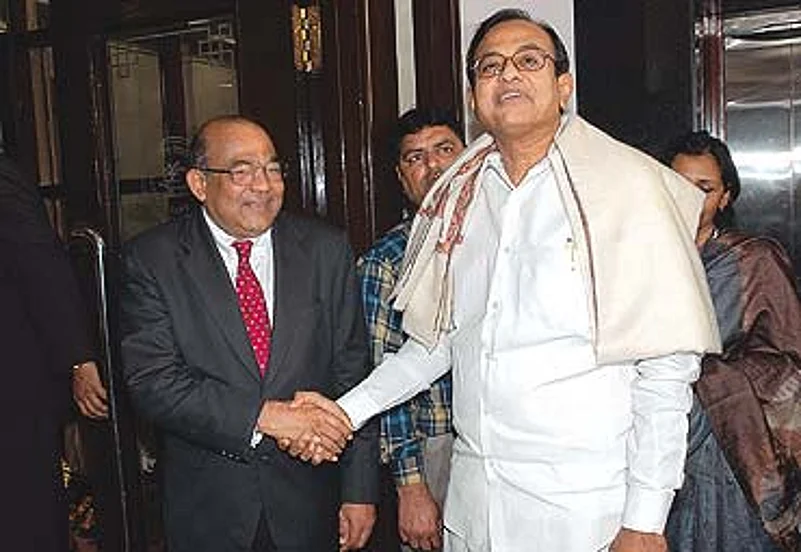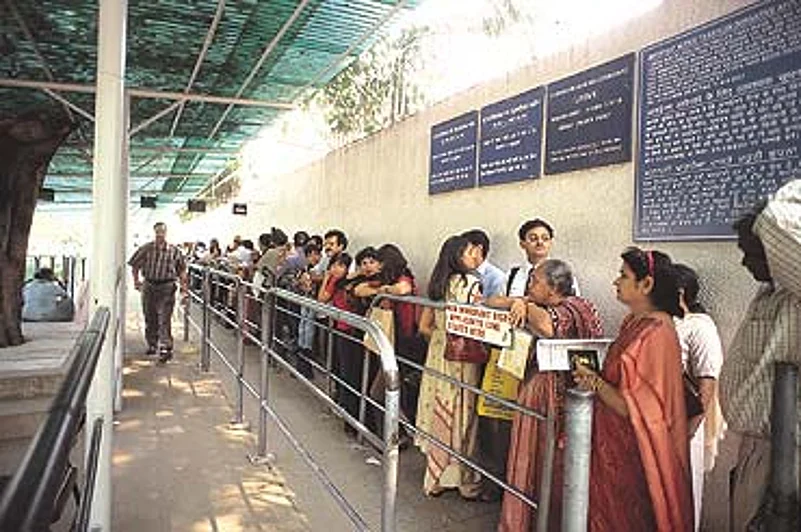
Some experts feel the RBI needs to stem these inflows. Former RBI governor C. Rangarajan has said that capital inflows well exceeded the current account deficit and some of them should be discouraged. The reason: to curb speculation and overheating of the economy, which can impact future growth. S.S. Tarapore, former RBI deputy governor, has warned that "there will be unprecedented capital outflows when international rating agencies flash red lights on India."
At the moment, the danger signals are blinking on the exports front. A recent survey by FICCI found that 11 sectors, which account for half of India's exports and include textiles and electronics, were significantly affected by the appreciating rupee and rising interest rates. Only the former factor has made these sectors lose their competitive edge vis-a-vis competing countries by 10-12 per cent. "The situation is suicidal for many exporters, particularly those where there is little or no import content," feels Ganesh Kumar Gupta, president, Federation of Indian Export Organisations.
However, exporters feel the real impact will be seen in July. Says Gupta, "Most exporters have 3-6 month contractual obligations that have to be honoured despite the pinch." Only later will they reduce supplies or hike prices to protect profit margins. If that happens, foreign buyers may consider India as an unreliable supplier, thus further impacting future exports. Prakash Kulkarni, MD, Thermax, feels that "for every 1 per cent appreciation of the rupee, there is a drop of 0.35 per cent in profits on export orders. The rupee appreciation will affect our global competitiveness."
The situation is complicated, as India's competitors like Sri Lanka, Pakistan and Bangladesh have devalued their currencies against the dollar. This has made their products 11-12 per cent cheaper than India's. As a foreign trade expert comments, "Indian mangoes are losing out to Pakistani ones; Bangladesh garments are scoring over ours." Another exporter admits to procuring over two-thirds of his low-cost upholstery and furnishing requirements from Pakistan.
Even the commerce ministry has got into the act and conveyed exporters' fears to the prime minister and the RBI. It has even asked the various export promotion councils to submit a report by the month-end. However, commerce secretary Gopal K. Pillai is guarded in his response: "By early July, clear signs of the dollar impact will be evident. It will be a mixed bag. Around 3-4 per cent dip is expected in the case of certain commodities, while there will be foreseen gains in others. We are not overly anxious as the industry has come of age in some sectors."
Most economists are not worried. Says Saumitra Chaudhuri, economic advisor,ICRA, "Very often, export performance is not linked to currency valuation but to other factors like demand, supply and competitiveness." In its newsletter, the Institute of Economic Growth (IEG) maintains that studies "have shown the impact of exchange rate on exports is rather weak." And Ravi Pai, head (forex and derivatives), HDFC Bank, categorically says that "in the last few decades, no exporter has ever lost".
In fact, these experts think that the opposite may be true. A stronger rupee can actually help exports in the long run. "Through its positive impact on intermediate and capital goods imports, it is expected to boost exports by increasing competitiveness," explains N.R. Bhanumurthy, associate professor, IEG. Since capital goods account for nearly 30 per cent of overall imports, and the imported content in exported products another 20 per cent, a stronger rupee will have a significant positive impact.

There are no doubts that a cheaper dollar helps the importers. For one, it will give a boost to private investments because of cheaper machinery and equipment costs. Two, it will provide a huge relief to the oil marketing firms. Explains S.V. Narasimhan, director (finance), Indian Oil Corporation, "The increase in global crude prices has been offset to an extent. The weaker dollar has helped us to reduce our losses by $4-5 per barrel." The fact is that despite a rise in crude prices, the government hasn't allowed the marketing firms to increase retail prices of petroleum products to the same extent.
But the most gains will accrue to the consumer, ie you. Your travel and shopping abroad is cheaper. Thanks to less expensive imports, prices of products will decrease. If exports suffer a bit, it will have a further downward pressure on local prices as these additional goods will be sold in India. Foreign education becomes cheaper, and so does buying gold in Dubai. Agrees Rajendra Bhola, a Delhi-based jeweller-exporter, "The $30 per ounce dip in gold prices globally in the past month and rupee appreciation are a booster for domestic buyers."
Not to forget the fact that the RBI is thinking of easing existing controls on spending in foreign currency. If the existing expenditure limits—$10,000 per person on a foreign trip and $100,000 for overseas education in the case of individuals—are hiked, make sure you have enough savings. Just convert those rupees into dollars, take the next flight out of the country, and splurge in the shopping malls in London, New York, Singapore and Dubai.


















